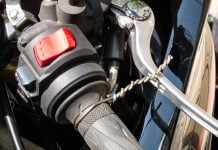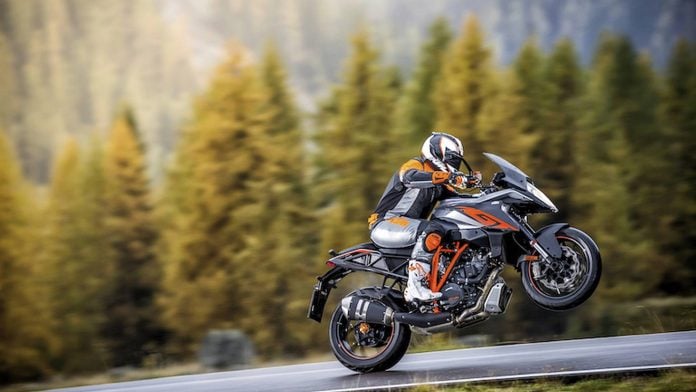Motorcycle riding is awesome! Motorcycles often called bikes, motorbike or cycle are two-wheeled machines motor vehicles. They vary greatly to suit different purposes: long distance travels, commuting, causing, sport riding (racing) and off-road racing.
In developing countries, motorcycles are considered utilitarian due to lower prices and fuel economy.
Table of Contents
What is a Motorcycle?
A motorcycle is a two-wheel – and ocasionally 3 wheel – engine powered vehicle. Various types of motorcycles are available for different purposes. The motorcycles are a popular transportation choice in many areas of the world.
The first motorcycle was designed in france in 1868 while the first serie production was produced in 1894. Early motorcycle designs were based on byccle designs with a simple adapted internal-combustion engine.
Since 1998, the number of motorcycles in the United States has increased by 34 percent according to motorcycles.org.
You can ask me, why all the sudden popularity? It’s simple, unlike cars motorcycles allow riders to connect intimately with the driving experience.
But it’s not just about adventure and freedom. The fuel economy of a motorcycle can vary significantly based on the riding style and engine model.
Why to Ride a Motorcycle?
There are many reasons to ride a motorcycle. It’s economic to get around town and explore roads. Plus, motorcycle riding it’s just really cool. However if you are starting on the 2-wheels world there are a few things to consider before getting started.
Getting on two wheels open you up to whole other worlds of fun, adventure and possibilities. It definitely changes your relationship with the road, with your commute, with your travels.
We all ride for different reasons, and sometimes for all the reasons: fun, adventure, bond with friends, save fuel, relax, moving medidation, to get through traffic easier, to accomplish goals.
The reasons are infinite.
- Travel and Adventure: Two wheels can take you almost anywhere in the world, and fortunately there are some places that only two wheels can take you.
- Commuting: Motorcycle riding is much less expensive than driving cars. Two wheels can make the commute itself be more enjoyable.
- Group Fun: Planning group rides with friends is always fun. Motorcyclists will tell you how much fun it is to recount a day of riding.
- Riding With a Passenger: Motorcycle rides for a passenger can be just as exhilarating.
- Track Days: Some riders enjoy the excitement and adrenaline with speed, and track days are a perfect way for motorcyclists to do so. The track day is a closed course, and many safety precautions are taken.
Types of Motorcycles
It’s pretty easy to understand what’s a motorcycle: an open vehicle with two wheels. However, there are many types of motorcycle available. Each suited to a specific style of riding, and a certain personal image. Keep in mind that your decision should be based on function and capabilities, not simply appearance.
- Sport Bikes: Sport bikes are intended to be ready for high-performance riding, but can be used for street riding as well.
- Naked Bikes: Naked bikes lack the bodywork of sport bikes. In summary naked bikes are sport bikes without bodywork.
- Dirt Bikes: Dirtbikes are designed for off-road riding. They typically have knobby tires, long suspension travel and minimalistic frames. They can be divided in Enduro, Motocross.
- Supermoto Bikes: Supermotos are similar to dirbikes, with some characteristics in common, as deep suspension travel and bodywork. Supermotos are designed to ride on streets.
- Touring / Dual Sports: Touring bikes are made for long-distance riding and features electronically suspension, heated grips, large windscreens, gps, etc.
- Scooters: Scooters are small bikes with easy, economic way to get around town.
You can learn more about motorcycle styles on our article Types of Motorcycles and have a better idea
What’s Your Style?
Beginner riders often agonize over what motorcycle they should buy as their first bike. Some riders want to buy a new motorcycle while other opt for a used bike to minimize the repair cost when they inebitably drop the bike while learning.
You want to use your motorcycle commute in the city or cruise across the country? Maybe you want to explore off-road trails ou enjoy twisty roads. And even you want to do everything.
Before buying a bike, you should consider a few things:
What will be the use of the bike?
After reading our topic above about motorcycle types you probably already know what is your style and how you plan to ride the motorcycle.
Have you ever ride a bike before?
It’s possible that someone you know bought a big machine as first bike. It’s possible that this person have natural athletic abilities and mechanical aptitudes for motorcycle riding and can handle it. But vast majority will not be able to do it. Think twice before getting an expensive bike because you can end up damaging it numerous times and most likely injuring yourself.
New vs. Used Motorcycles
This is probably the most fun step (besides riding your bike). But rirst, you should determine your budget, then consider if you want to buy a new or a used motorcycle.
A used motorcycle can be less expensive, but could cost more in repairs and maintenance.
Check our list below to decide which one you should buy:
Used Motorcycle
Pros:
- Less Expensive: A bike that’s even a few months old will be cheaper than a brand new model.
- Lower Insurance Cost: That’s not always the case, but usually a used bike may be less expensive to insure than a new model.
- Good for Practice: New riders are still learning, so repairing costs will be a lot cheaper.
Cons:
- Unknown History: Most of the times you don’t know how the previous owner treated the bike, it can have mechanical issues.
- Hidden Costs: Keep costs may be higher, depending on the maintenance level.
- Lacks new technology: Used bikes generally don’t have all features that new models are coming in (unless you buy a “new” used bike.
New Motorcycle
Pros:
- Has a warranty: Normally new bikes come with manufacturer warranty to protect about mechanical problems.
- Clear history: You don’t need to worry about the bike having been damaged.
- More mileage: The bike will have no miles on the odometer.
Cons:
- More expensive: New bikes are much more expensive than used bikes.
- Quickly Depreciates: The motorcycle cost decrease its price as soon as you remove it from the store.
- Higher insurance cost: Newer motorcycles usually cost more than used bikes.
Motorcycle are a great value. But that doesn’t always mean they’re cheap.
Motorcycle Gear Protection
No matter the season, dress for the fall!
You probably are thinking that driving a motorcycle is pretty easy.
With a car, you step into your safety equipment. With a bike, you put on your safety equipment.
It’s completely different than driving a car, so you need to have the right clothing before you start riding. Every motorcycle style requires a different gear protection, yet a few things are universal to all types of bikes.
To be a proper rider, you must wear proper gear from head to toe.
Here are some equipments you should consider before hop on a motorcycle.
- Helmet: The helmet is the most important part. If you’re ever in a crash, this simple piece of gear can make a difference and possibly save your life.
- Jacket: Wearing a motorcycle jacket when riding is also important for safety, it will help reduce the amount of injure if you are thrown off a bike onto pavement or another vehicle.
- Pants: Pants also contribute to saving your skin, protecting your bones.
- Gloves: Wearing motorcycle gloves increases your level of comfort while riding and protect your hand from a casually road rash.
- Boots: These are extremely important, you need to protect your feet and ankles.
Motorcycle Riding Techniques
Practice makes it perfect!
Before your first ride you probably want to take a training course and experience your first ride in a controlled parking lot under supervision.
As a begineer, it’s important to take your time and really get to know your bike. This helps avoid first-timer mistakes.
Getting too fast when you have zero or small experience can lead to serious acidents.
Within your introduction to the bike, you’ll need to get used to bike controls, which basically are accelerating and shifting gears.
Of course, you also need to know how to stop a motorcycle and understand when to use the front or rear brakes.
Motorcycle Modifications
After you buy your first motorcycle, don’t be scared if you start planning spend all your salary on mods and improvements.
Taking a brand new bike is one of the biggest thrills you can get as a rider, the smell of fresh rubber and lube, the beautifully designed piece of machine… all are awesome things when you buy a motorcycle.
But after you start riding you will feel those annoying things about. That weak exhaust sound, a big and ugly rear fender, and more.
Usual motorcycle mods can include some of the following:
- Exhaust System: Make your motorcycle scream
- Air Filter: It helps your exhausts breath better
- Frame Sliders: Protect you motorcycle from a possible fall. It is much less expensive than fairings or engine cases
- Fender Eliminator: Make your bike ass really sexy
- Windscreen: Makes wind go away from your face
- Tires: New tires doesn’t mean that they are the best (depending on the bike)
- Turn Signals: Just because stock signals are ugly
… and much more.
Motorcycle Maintenance
Before you ride, it’s important to take a few minutes to look over your bike to ensure your bike will be running properly.
Fortunately you don’t need to have a mechanical know-how of a MotoGP to perform required maintenance of motorcycles, some decent tools and a little of common sense are all you need.
Normally, all bikes come with an user manual for a better understanding of how each task should be done.
You should consider the quote: “tools are like knives to chefs”. Save the under-seat tool-kit for roadside emergencies and invest in quality for home maintenance.
If you’re lacking mechanical confidence, ask your mechanic for help.


































